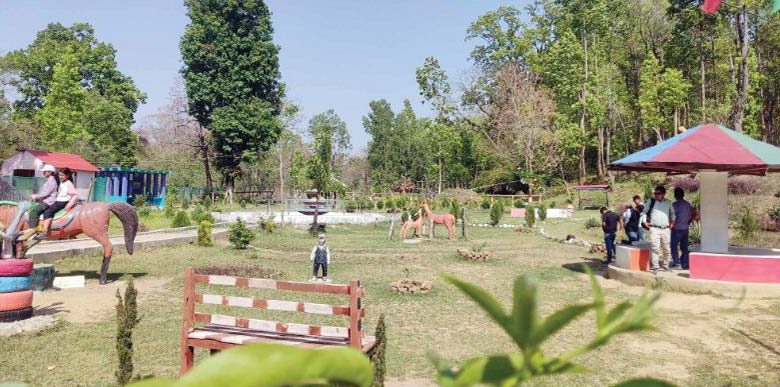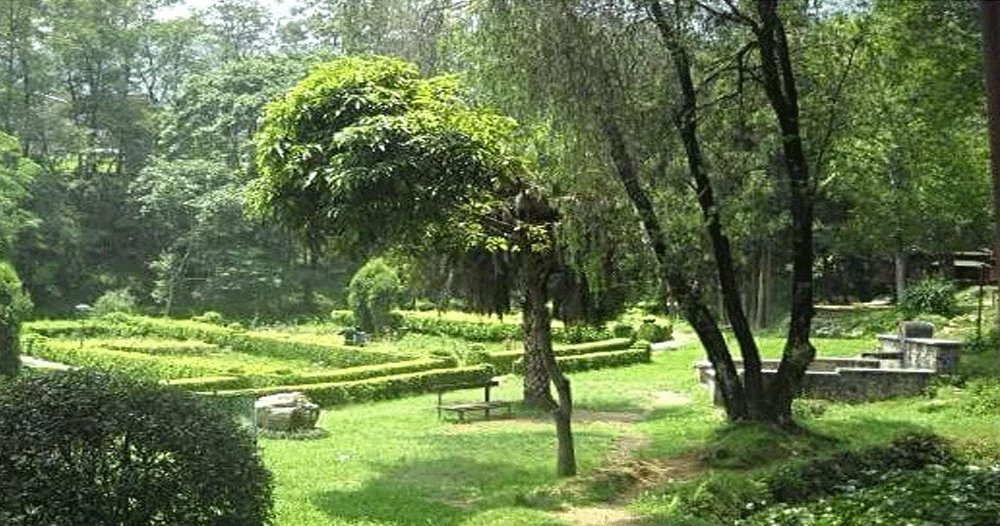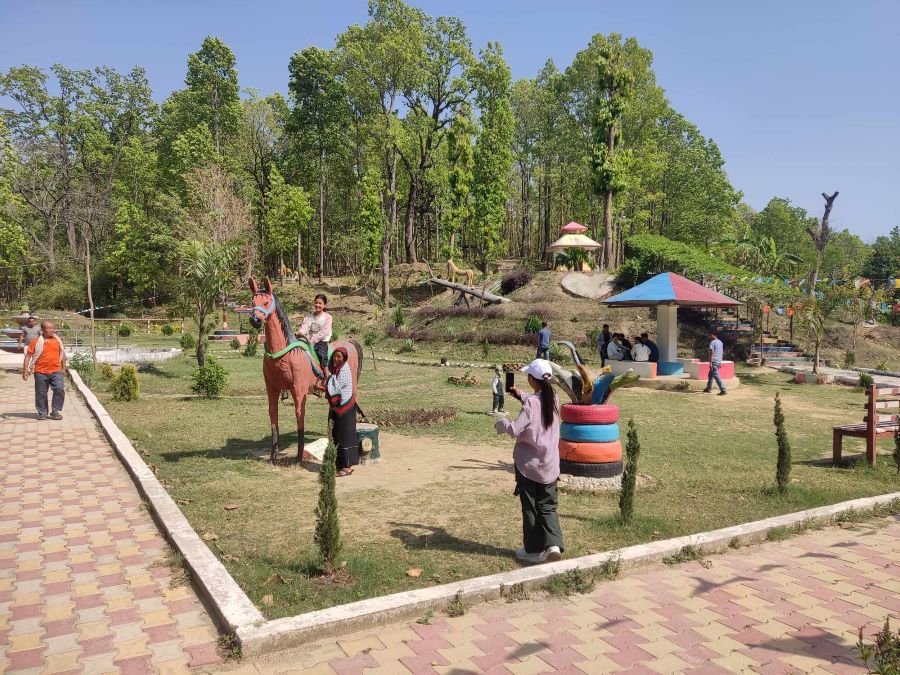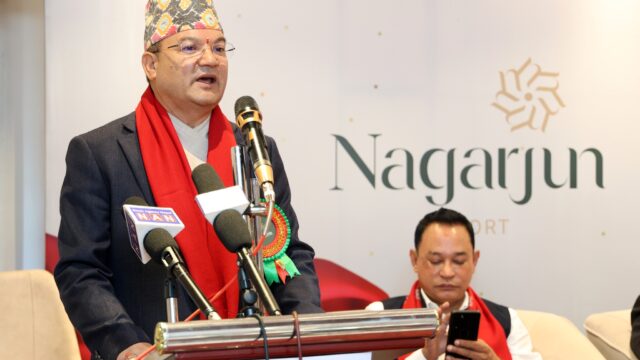Kulpani Green Park, located in Gadhawa Rural Municipality–1, Badahara, has been attracting a growing number of domestic tourists in recent months. With consistent footfall almost every day, the park is emerging as a preferred destination for nature lovers, families, and local explorers looking for tranquility, biodiversity, and cultural connection.
A Rising Destination for Internal Tourism
Thanks to the initiatives by the Kulpani Community Forest Users Group, the once underutilized wetland area has been transformed into a vibrant eco-tourism spot. The group constructed a lush green park, an artificial reservoir, and a wooden view tower (bhutower), all aimed at conserving the wetland while promoting internal tourism.
Nawaraj Sharma, Chairperson of the Community Forest Group, shared that the park’s rising popularity is largely due to its well-thought-out blend of natural and artistic attractions. “The park showcases life-size wooden sculptures of Bengal tigers, rhinoceroses, deer, horses, peacocks, and various bird species. These additions have drawn large numbers of visitors who come not just to relax but also to take part in educational and recreational activities,” he explained.
Creative Additions Increase Tourist Appeal
One of the park’s standout features is a wooden suspension bridge over the pond and a scenic view tower that offers panoramic vistas of the surrounding forest and wetlands. These elements have significantly increased the park’s aesthetic and experiential appeal, making it a popular site for photography, social media sharing, and family picnics.
The park charges a nominal entry fee of NPR 20 to 30 per person. This has allowed the community forest group to generate sustainable income, which is being reinvested into further development of the park and associated facilities.

Encouraged by the positive response, the management now plans to expand the park’s coverage from its current 12 hectares to 20 hectares, aiming to provide more recreational space and ecological diversity.
Over 51,000 Visitors So Far
According to Sharma, more than 51,000 people have already visited the park. The statistics point toward the growing interest of Nepali travelers in eco-friendly and culturally rooted destinations.

Kulpani’s success is not only a tourism story but also one of cultural conservation. The forest group is actively working to collect and preserve traditional wooden tools and objects that were once a part of daily life in the Deukhuri region but are now on the verge of extinction.
These include traditional wooden boats (ladiya, dunga), household items like dhiki (traditional rice beater), halo (plough), juwa (yoke), theki (water vessel), and other heritage artifacts. However, Sharma noted that although many such items have been collected, the lack of proper infrastructure has prevented the establishment of a full-fledged wooden museum, which remains a priority for the group.

Plans for Religious and Wetland-Based Tourism
The Kulpani Community Forest Group also envisions turning the area into a religious and ecological tourism hub. With the wetlands, forest cover, and natural resources in abundance, they aim to introduce water-based recreational activities such as boating while preserving the spiritual significance of the land.
Sharma emphasized that while the initiative is gaining momentum, support and investment from the government and stakeholders remain limited. “We need adequate infrastructure to fully realize the area’s tourism potential. Despite the growing number of visitors, a lack of funding has restricted our ability to expand,” he stated.
Local Perspective: A Cool Getaway in Summer
Locals, like Sita Giri, express pride and excitement over the changes. “In summer, the park offers a cool retreat within the jungle. Visitors come not only to admire the animal statues and scenic views but also to click photos and make videos,” she said. According to her, the park sees a major influx on Saturdays and public holidays, especially families and youth groups.
Since the installation of statues and introduction of boating facilities in the pond, there’s been a marked increase in weekend visitors. However, the park still faces challenges such as lack of funding for a children’s playground, enclosures for wildlife statues, and fencing to ensure security and aesthetics.
A Model for Community-Led Eco-Tourism
Kulpani Green Park stands as a testament to how community-led conservation and tourism initiatives can transform local economies and ecosystems. It demonstrates the potential of integrating environmental preservation with sustainable tourism development. With additional support from local governments and tourism stakeholders, Kulpani could evolve into a model destination, promoting both eco-tourism and cultural preservation in the Lumbini Province and beyond.
As Nepal looks to diversify its tourism offerings beyond traditional trekking routes and religious sites, places like Kulpani offer a promising future for inclusive and grassroots-driven tourism growth.





